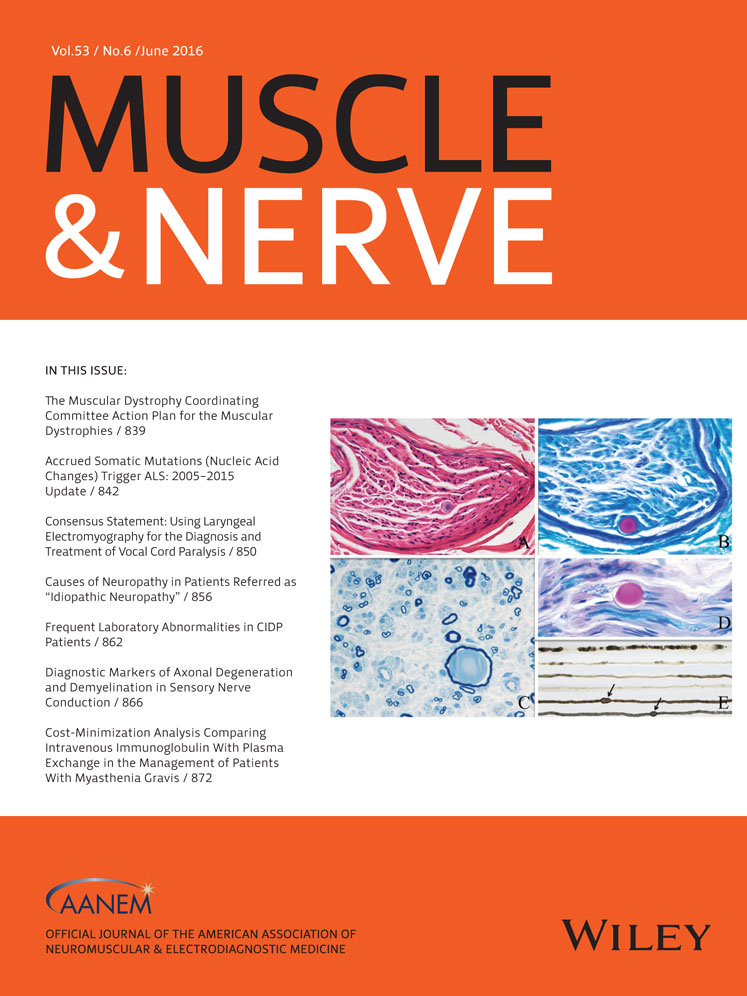Plasma neurofilament heavy chain is not a useful biomarker in Charcot–Marie–Tooth disease
This study was supported by fellowship funding from the National Institutes of Neurological Diseases and Stroke and Office of Rare Diseases (U54NS065712) and an Ipsen Phamaceuticals clinical research fellowship (to A.M.R.). Supported was also provided by the Medical Research Council Centre (G0601943 to M.M.R.). The Inherited Neuropathies Consortium (U54NS065712) is a part of the NCATS Rare Diseases Clinical Research Network (RDCRN). The RDCRN is an initiative of the Office of Rare Diseases Research (ORDR). NCATS is funded through a collaboration between NCATS and the NINDS. This research was also supported by the National Institute for Health Research University College London Hospitals Biomedical Research Centre.
ABSTRACT
Introduction: The negative results in trials of vitamin C in Charcot–Marie–Tooth disease (CMT) type 1A have highlighted the lack of sensitive outcome measures. Neurofilaments are abundant neuronal cytoskeletal proteins, and their concentration in blood is likely to reflect axonal breakdown. We therefore examined plasma neurofilament heavy-chain (NfH) concentration as a potential biomarker in CMT. Methods: Blood samples were collected from healthy controls and patients with CMT over a 2-year period. Disease severity was measured using the CMT Examination Score. An in-house enzyme-linked immunoabsorbent assay was used to measure plasma NfH levels. Results: There was no significant difference in plasma NfH concentrations between CMT patients and controls (P = 0.449). There was also no significant difference in plasma NfH levels in the CMT group over 1 year (mean difference = –0.02, SEM = 4.44, P = 0.98). Conclusions: Plasma NfH levels are not altered in patients with CMT and are not a suitable biomarker of disease activity. Muscle Nerve 53: 972–975, 2016




